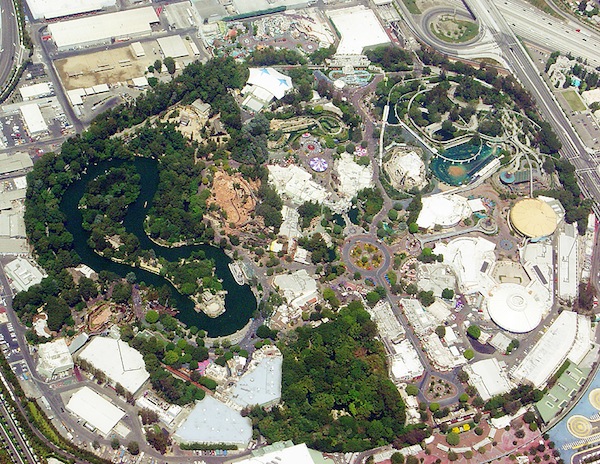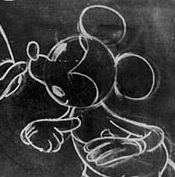I’m a huge fan of the Walt Disney park experience, and my family has traveled to Walt Disney World and Disneyland multiple times. The service we’ve received has always been exceptional, and I return from every visit with at least one extra-special memory.
The reason the Disney experience is so consistently good is a focus on quality, detail, and the customer. For the Walt Disney Company, that focus came from the man whose name is above the door.
Walt Disney was an innovator, a creative force, and a brilliant businessman. But even more than that, I consider Walt Disney the first user experience designer, for reasons I will explain.
It’s Always Been About the Experience
The key to the Disney Park experience is immersion: everything is designed down to the exact detail. Cast members are trained on how to treat customers with very specific instructions on how to do even the minutest actions, like waving and smiling.
Where there was once orange groves and swampland, there are now virtual worlds that guests can explore. A manufactured wonderland created with one goal in mind: to entertain and bring joy to visitors.
I first realized that Disney was a user experience pioneer as I was watched a video of him introducing “The Florida Project” to the world—a project that became Walt Disney World. At one point, Disney described the plan for the Experimental Prototype Community of Tomorrow (or EPCOT) as “an experimental prototype that is always in the state of becoming, a place where the latest technology can be used to improve the lives of people.” If that isn’t what UX is in a nutshell, I don’t know what is.
He said this in 1966.
Design like Walt
In building out the Disney theme parks, Walt Disney and his deign team (which he named Imagineers) established many best practices that we user experience designers can follow as well. Here are some of them:
Make special moments: Disney and his team had a sharp focus on creating a unique experience that guests could not get anywhere else. This focus on making as many special moments as possible resulted in happy (and repeat) customers. Human beings retain bad memories more than good, so providing happy moments results in people revisiting in a desire to relive or recapture those special moments.
Always be plussing: Disney was never completely satisfied. He always asked for more, always pushed his team to bring more to the table. He called this “plussing,” incrementally improving details and elements of an experience. It wasn’t “adding more stuff”—which so many companies do—it was making a good experience better; making sure the sound effects on the Pirates of the Caribbean ride were loud enough to rattle the riders; making sure that the Tiki Birds were able to have dozens of different gestures, not just ten. It was aspirational, and I think it’s the right way to approach design. Imagine if all designers and developers did their work with this type of attitude.
Give customers options: Walt didn’t design one different locale with the original Disneyland: he made four of them, each with a different theme and different experiences. By doing so he was able to appeal to more people, and also allow for people to either stay in one “land” (such as Adventureland) for an entire visit, or use the “hub” to quickly jump from there to Tommorowland, or another area.
Image courtesy Frank Horst
You can see this idea reflected in countless different UIs today (different views, different ways of searching, different options for advanced users, etc.). It may seem obvious today, but Disney came up with the idea and did it first.
Fix things that don’t work: The grand opening of Disneyland was, in many respects, a disaster. They ran out of food, rides broke down, counterfeit tickets were being used to get into the park, and the asphalt sidewalks had not finished curing in many places. Though I’m pretty sure there was some yelling involved, Disney met with his team, did a postmortem, and fixed things. We need to follow that example, be self-conscious and objective about our designs, and fix what isn’t working.
Take risks: As briefly noted above, Disney sunk a tremendous amount of his own money in two projects: a full-length animated film called Snow White and the Seven Dwarfs, and Disneyland. Both projects brought him to the brink of losing it all, and both projects were huge successes. We need to take risks with what we design, and “aim for the fence” just like Disney did, because great risk also brings great reward.
Hire smart people: Disney surrounded himself with incredibly talented people and let them do their thing. Though he had to approve almost all the details, he knew that he needed top-notch people to execute his vision and to bring new perspectives to the table. Follow Disney’s lead when it comes to building your team.
Direction like this convinces me that Disney was the world’s first UX designer.
Innovate: Disney innovated both filmmaking and resort experiences, creating the multi-plane camera for film and a complex series of animatronic robots for his parks. He could have gone the safe route and not pushed the envelope, but he did, and we all benefited. Where can you innovate in your design work? What new ideas or interactions can you bring to the table?
Use data to make things better (and maximize profits): Disney looked at traffic patterns and sales data from his parks to change things. Sold out of ice cream in Frontierland last week? Double the number of ice cream stands there this week. Too many people in line for Splash Mountain? Redesign the queue to make sure that the people have extra shade and fans. Disney was one of the first people to look at analytical data to influence business decisions. Like Walt, UX professionals should leverage analytical data to inform their understanding of users and supplement qualitative user research.
Test, refine, then test again: Disney sent friends and family on rides like Jungle Cruise before they opened to elicit feedback and fine-tune the experience. It’s exactly what we do as user experience professionals, and he did it 50 years ago.
Mickey’s 10 Commandments
Imagineering President Marty Sklar formally documented some of Disney’s advice and direction for his team, naming them “Mickey’s 10 Commandments.” Like the best practices detailed above, Disney applied these principles every day, and they are applicable to much of what we do in UX:
1. Know your audience: “Don’t bore people, talk down to them, or lose them by assuming that they know what you know.” This is absolutely necessary in UX design—without a deep understanding of your users you can’t create a solution that solves their problems or adds value to their lives.
2. Wear your guest’s shoes: “Insist that designers, staff, and your board members experience your facility as visitors as often as possible.” This approach increases the empathy your design team has for your users, making the designs you create more appropriate and helpful.
3. Organize the flow of people and ideas: “Use good storytelling techniques; tell good stories not lectures; lay out your exhibit with a clear logic.” Storytelling is a vitally important skill in UX, not just when explaining your final design solution to stakeholders, but also in your designs themselves—especially if you’re trying to describe an offering to new customers.
4. Create a weenie: “Lead visitors from one area to another by creating visual magnets and giving visitors rewards for making the journey.” Imagineers called these magnets “weenies”–objects that are large enough to see from a distance and interesting enough to draw their attention. Very good advice, and when designing a “stepped” process providing a ‘weenie’ to follow will result in lower abandon rates and increased customer satisfaction.
5. Communicate with visual literacy: “Make good use of all the non-verbal ways of communication—color, shape, form, texture.” We are currently having a big debate in the UX design community about skeumorphism (the use of real-world visual metaphors in a user experience) and this commandment aligns with the argument advocating such an approach. Skeumorphism done well helps people learn new experiences because of the visual cues that remind them of real-world metaphors reflected in the design. Of course, skeumorphism done badly is … well, pretty awful and unhelpful.
6. Avoid overload: “Resist the temptation to tell too much, to have too many objects; don’t force people to swallow more than they can digest, try to stimulate and provide guidance to those who want more.” Cognitive overload is one of the major issues that can occur when a UI is “overdesigned” with too many options. This commandment is great advice to avoid that type of situation.
7. Tell one story at a time: “If you have a lot of information, divide it into distinct, logical, organized stories; people can absorb and retain information more clearly if the path to the next concept is clear and logical.” This is information architecture 101, and direction like this convinces me that Disney was the world’s first user experience designer.
8. Avoid contradiction: “Clear institutional identity helps give you the competitive edge. [The] public needs to know who you are and what differentiates you from other institutions they may have seen.” Disney thought about branding before most people even knew what the term meant. When designing, don’t look at brand as a separate thing to be applied at the end—it’s a crucial part of the total experience.
9. For every ounce of treatment, provide a ton of fun: “How do you woo people from all other temptations? Give people plenty of opportunity to enjoy themselves by emphasizing ways that let people participate in the experience and by making your environment rich and appealing to all senses.” The concepts of gamification and immersive experiences are direct descendants of ideas like this.
10. Keep it up: “Never underestimate the importance of cleanliness and routine maintenance, people expect to get a good show every time, people will comment more on broken and dirty stuff.” This is less applicable to UX design, but an absolute golden rule when it comes to process and service design. Always do your best, follow your process and deliver quality.
Keep Moving Forward
As noted above, Walt Disney famously said that he wanted his parks to never be finished—that he wanted it to evolve and grow over time. He said the key is to always keep moving forward, to make the good better, to continue to improve things, and to strive to make things better.
This isn’t just a great philosophy for user experience professionals to develop, it reminds us all to keep moving forward.









